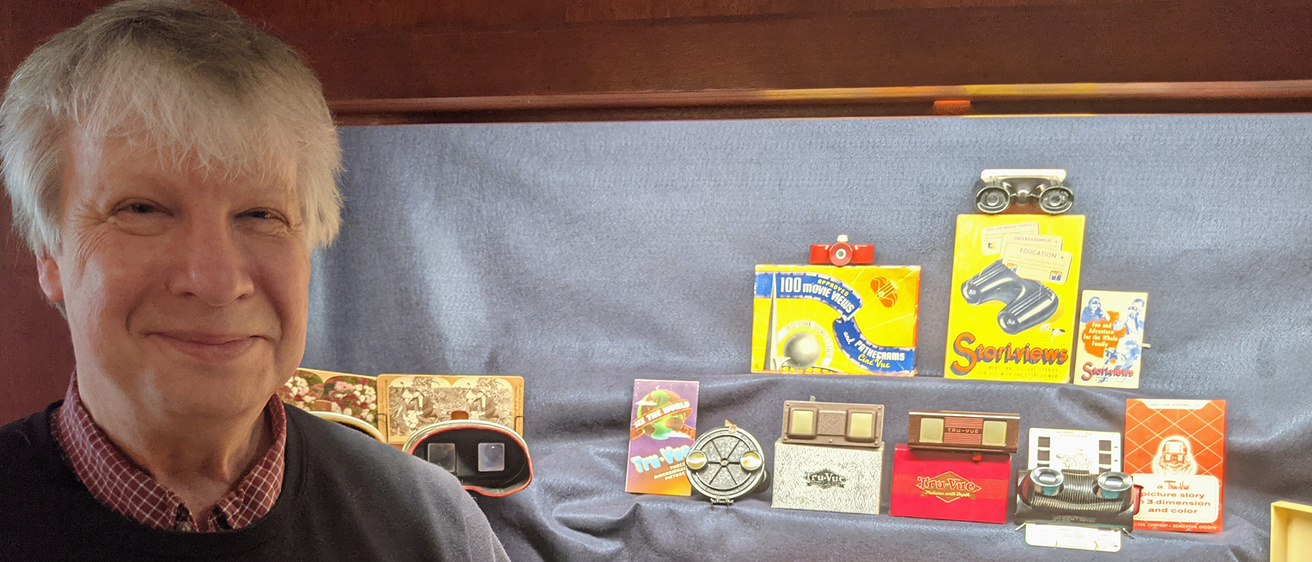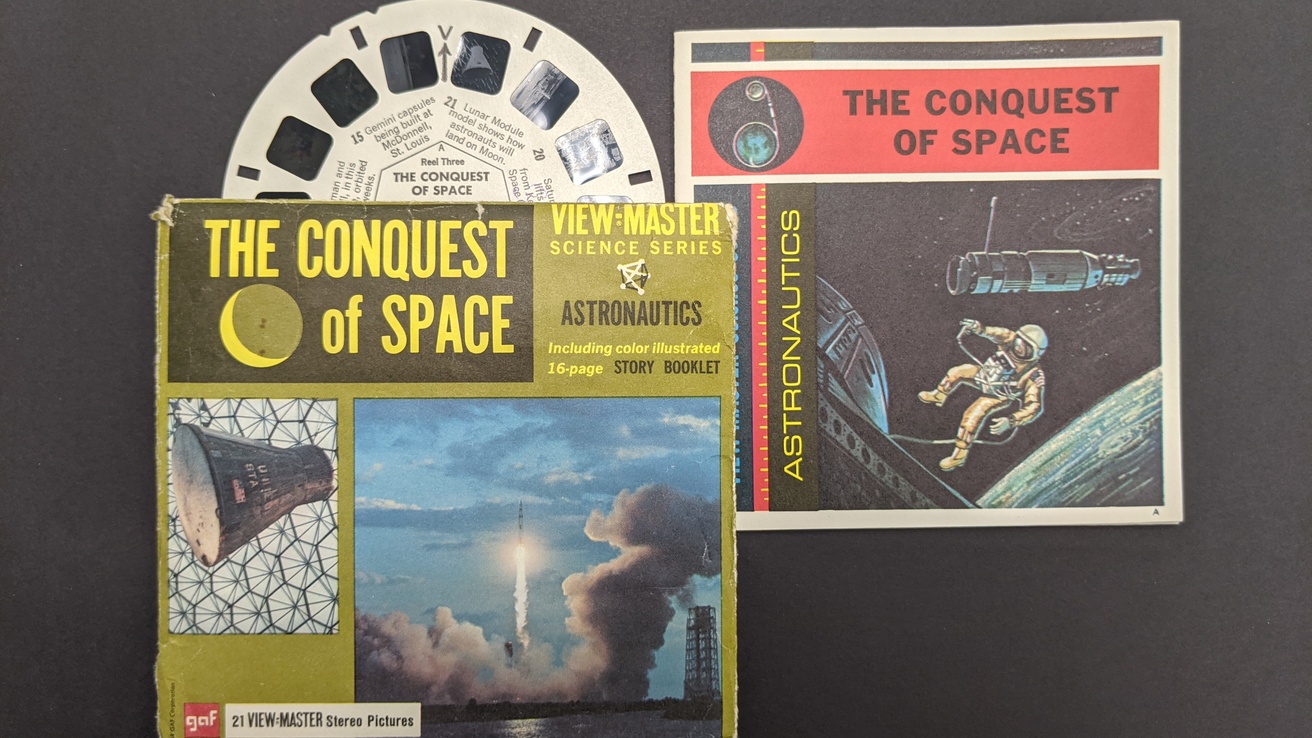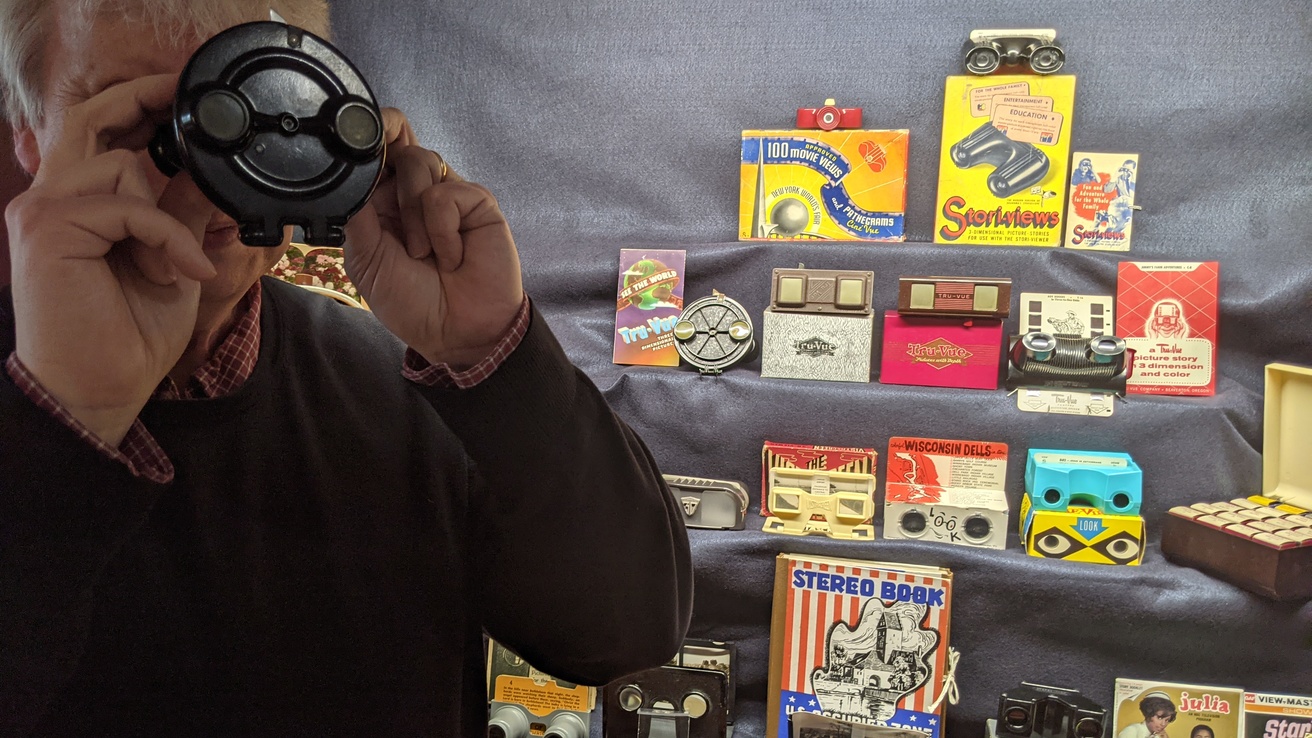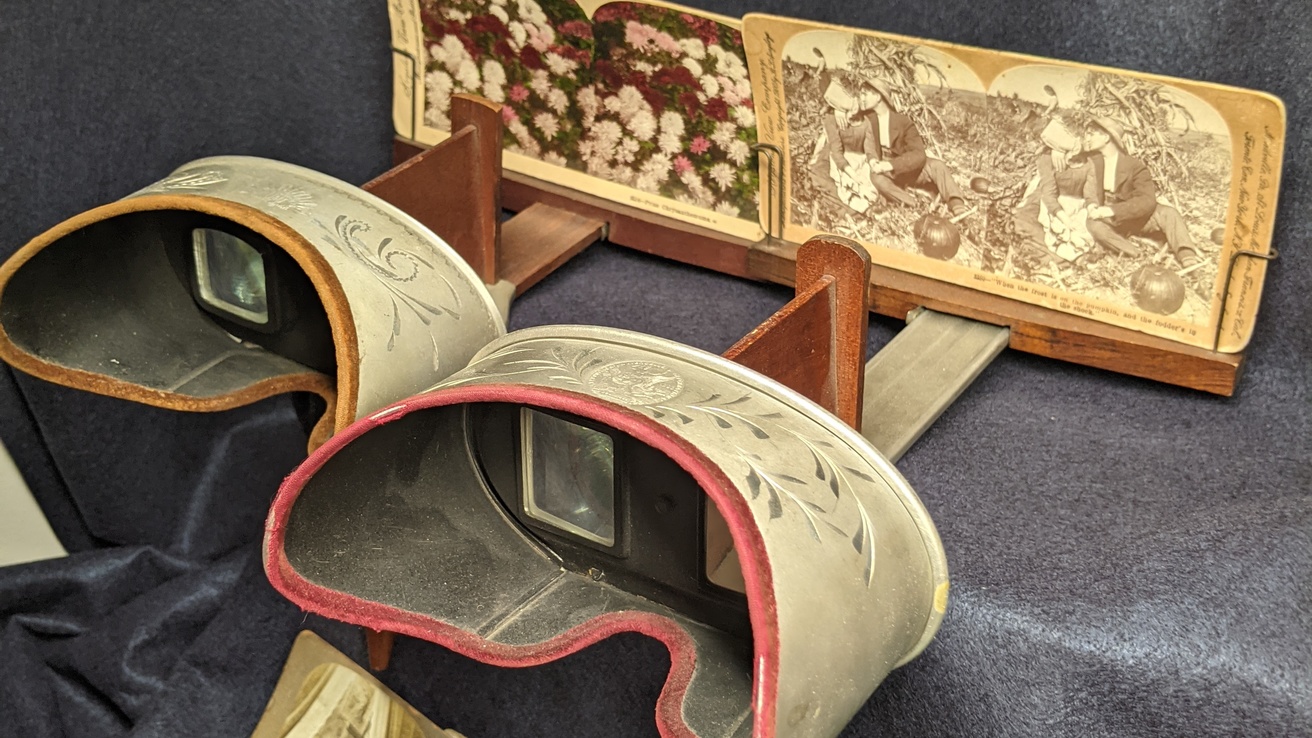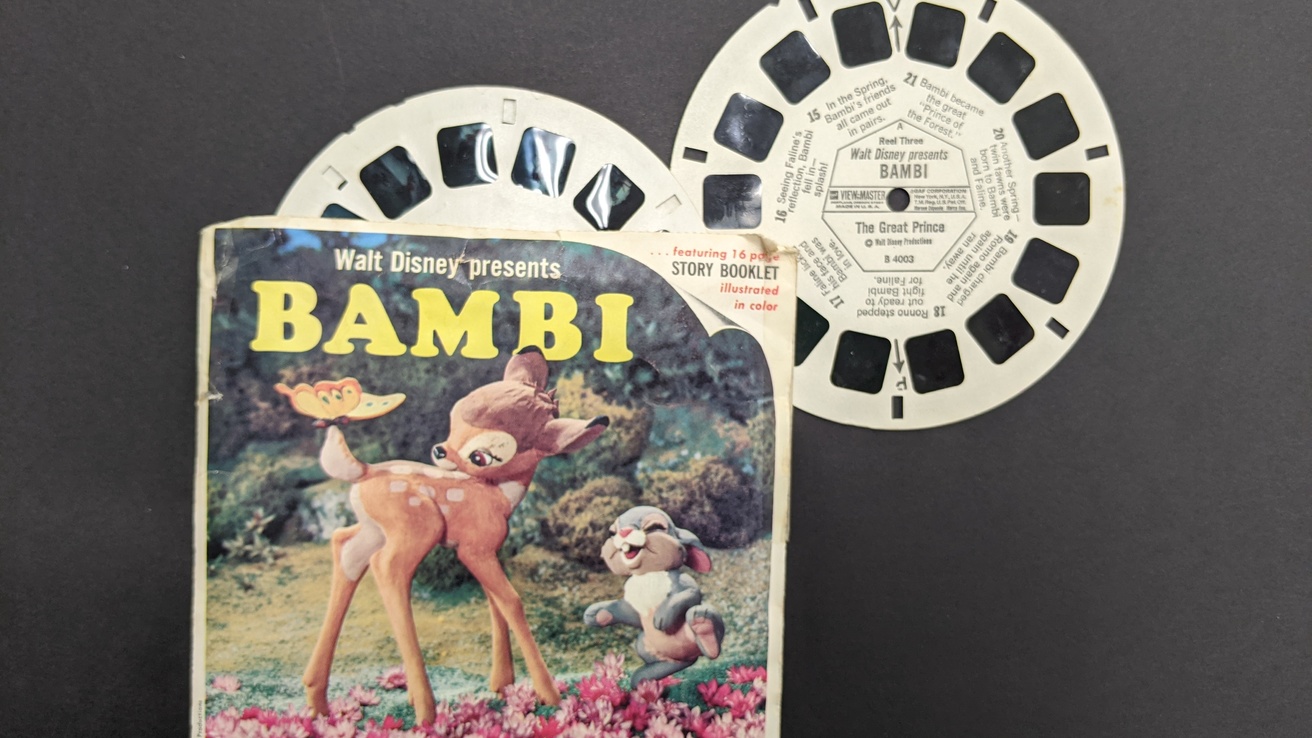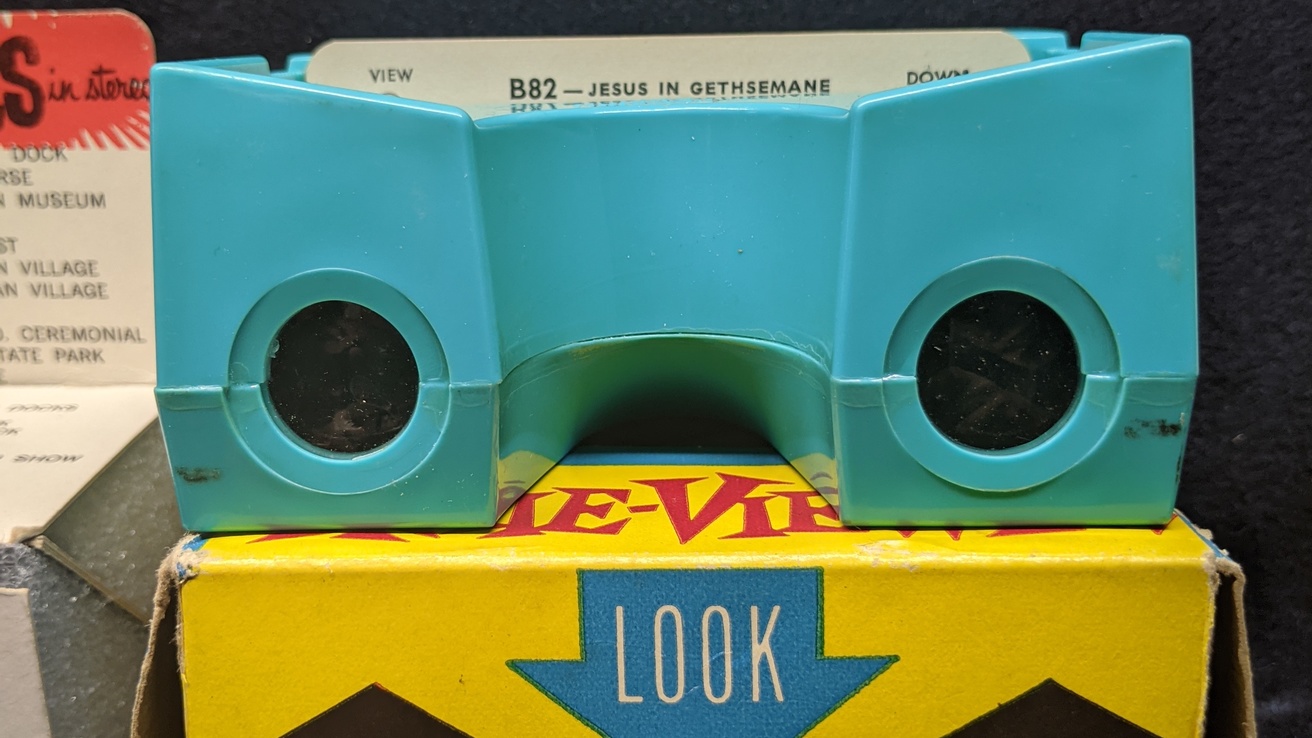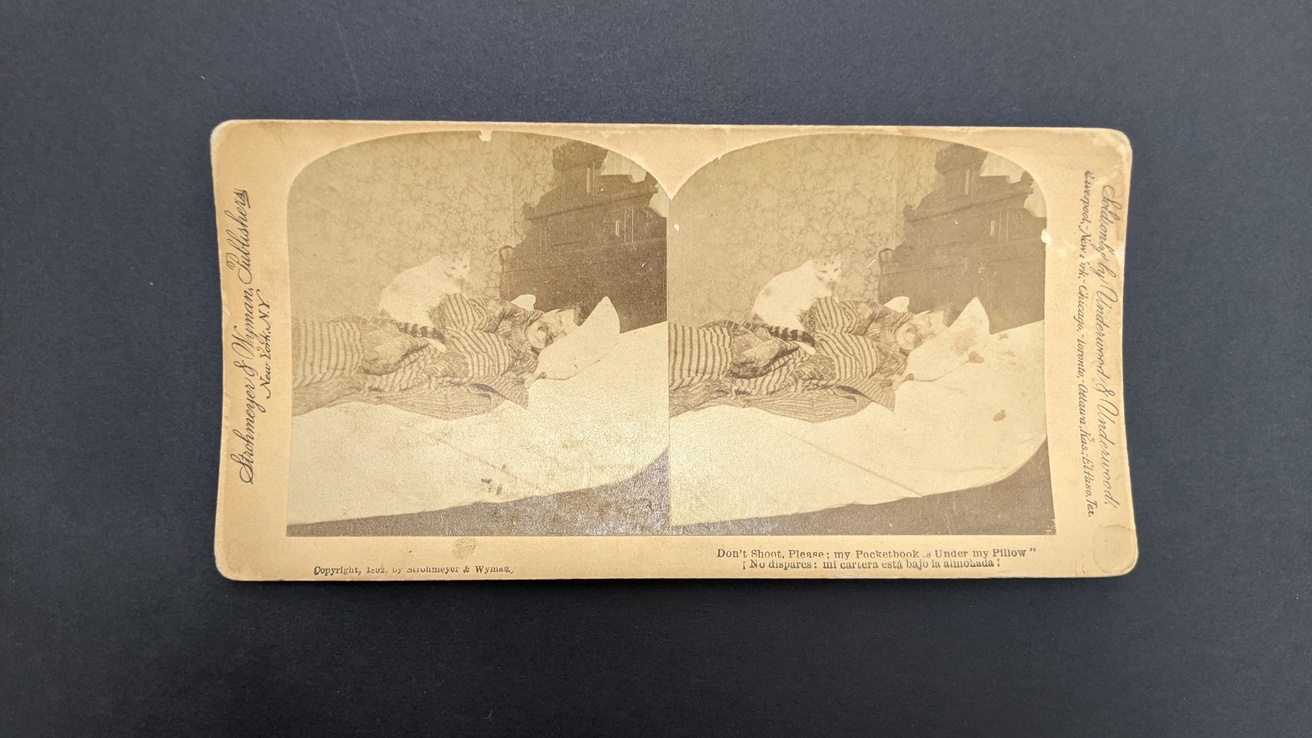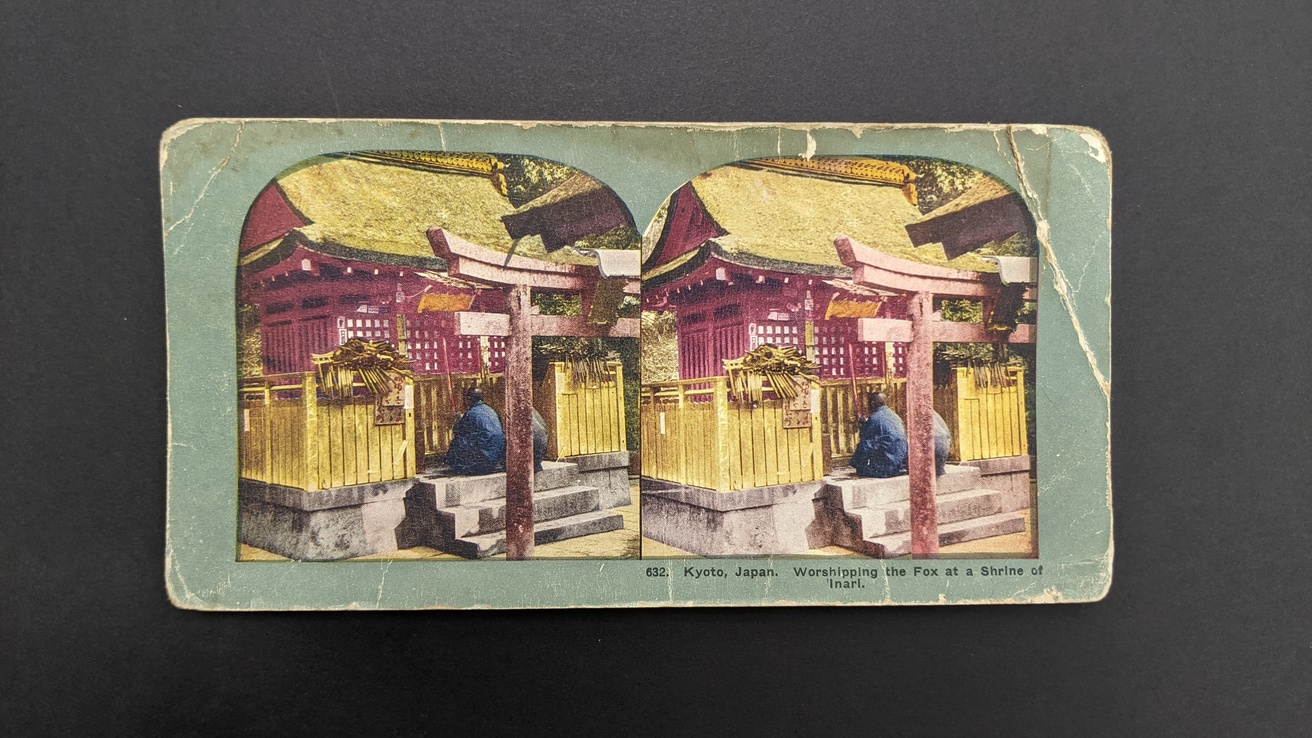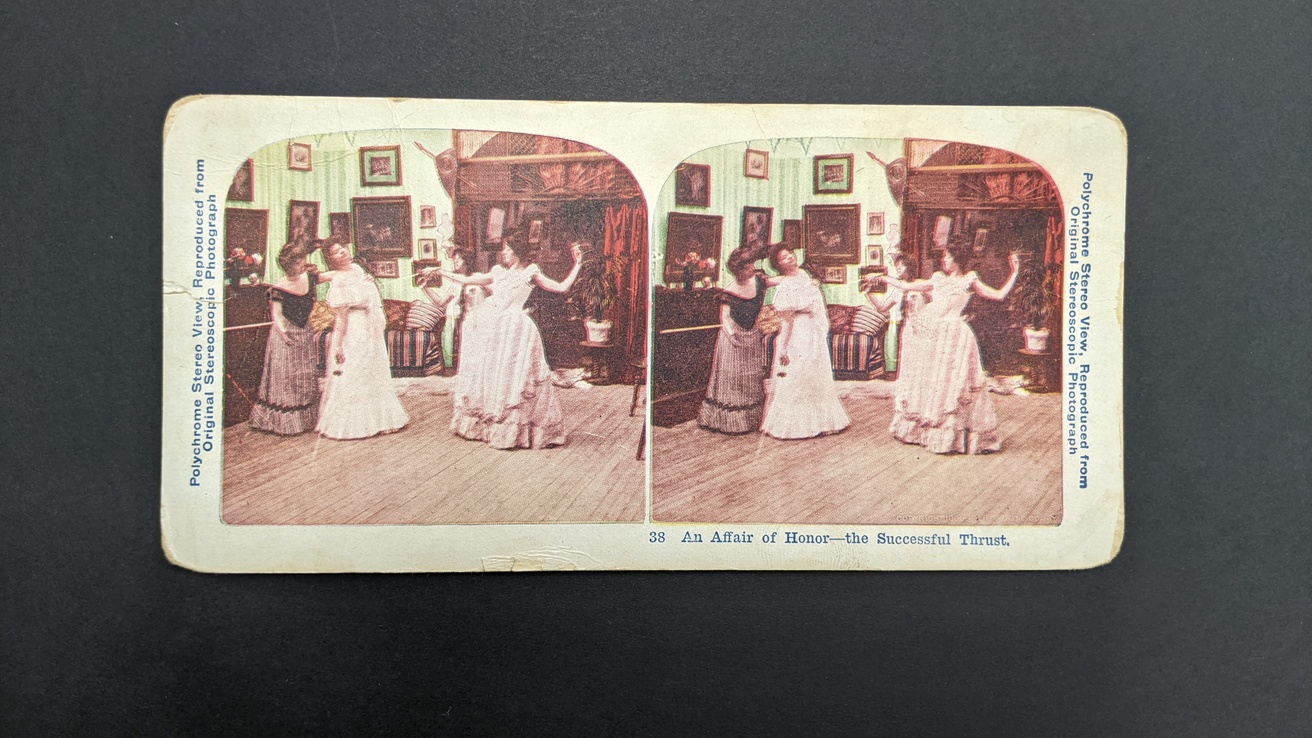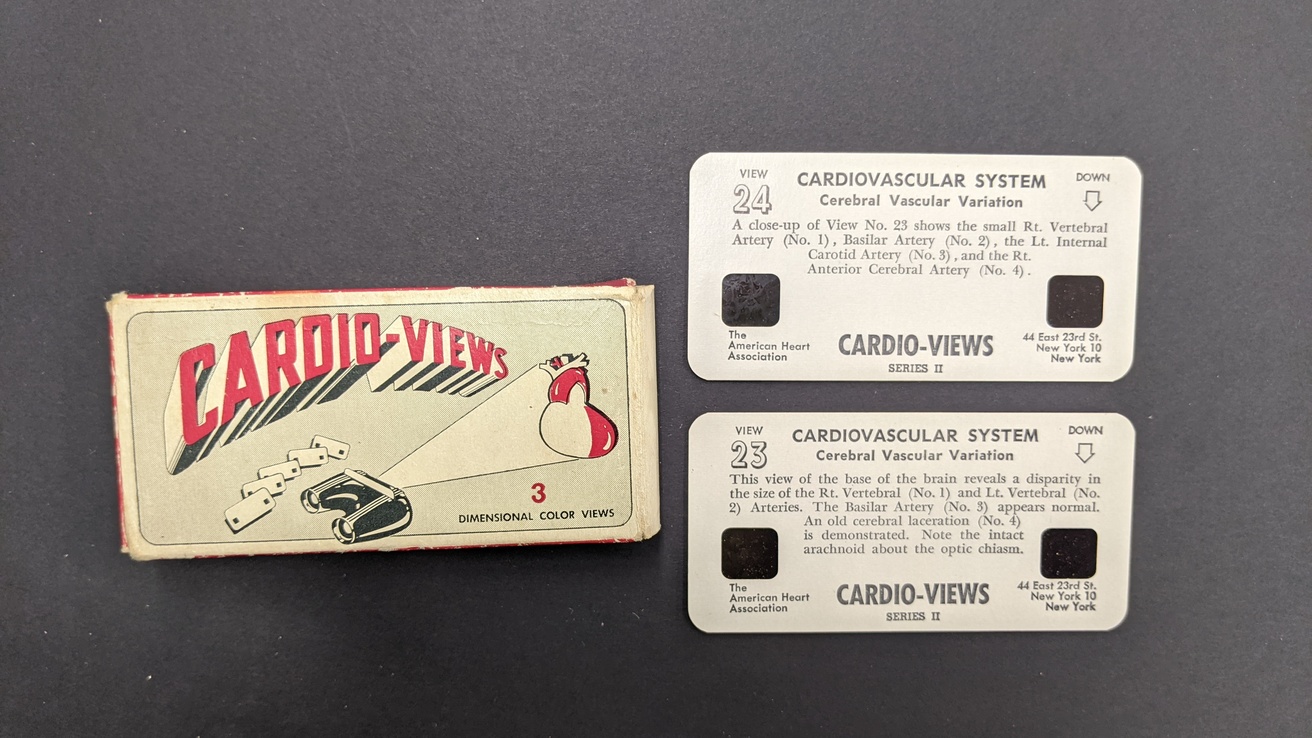Collector: Corey K. Creekmur, Associate Professor, Departments of Cinematic Arts, English, and Gender, Women’s & Sexuality Studies
Collection Name: 3-D Toys and Technologies
Collection Statement:
For American children of the past century, the View-Master – a small plastic toy that shows you a series of stereo images when a “reel” of photos is inserted and advanced – was ubiquitous. These devices, which offered views of the world as well as reduced versions of popular movies, TV shows, and cartoons, also implicitly reminded you that while normal binocular vision allows us to see the world in three dimensions, the images we view in print and on screens flatten that world into the two dimensions of width and length, but not depth. What might allow us to see such 2-D images with the fullness our own two eyes provides? That question has been pursued persistently, at least since the 19th century, by scientists as well as toy manufacturers.
In my professional role as a film scholar, I’ve studied the long history of optical devices often viewed as primitive precursors to cinema itself. But stereo viewers or stereoscopes – generic terms for a wide variety of objects sold under many names – both preceded and continued to develop alongside cinema. Unlike other early optical toys, cinema never really displaced or surpassed them. Still, if you have been thrilled by recent 3-D IMAX films or virtual reality (VR) headsets, it’s worth recognizing that these humble gadgets led the way towards our current high-tech devices.
Aside from the fundamental fascination with seeing flat images emerge in 3-D, my delight in these objects' centers on their extreme variety. At heart they all rely on a similar structure of two lenses and a light source to simulate binocular depth perception. (The actual material viewed – on cardboard slides, film strips, rectangular cards. or circular reels – has been more varied.) But in their ongoing, global production, inventors and manufacturers clearly sought to distinguish their products from their predecessors and competitors. Even when you aren’t looking through the viewers, their variation of playful industrial design with mass production materials allowed for Victorian ornamentation that shifted to art deco and futurama streamlining: their colorful packaging and advertising is also often intriguing and charming. Even when not in use, my pleasure in these assembled examples stems from that sheer range of shape, size, and color as much as from their basic yet somehow magical transformation of flat images into rounded views.
Image Gallery
Featured collections items:
-
[H. C. White] Perfecscope Stereopticon c. 1902 with assorted slides
-
Underwood & Underwood Sun Sculpture Stereoscope c. 1901 with cards
-
Arcadia Self-Illuminating Stereo Viewer [chocolate and tan]
-
Camerascope (black metal folding) with 12 Camerascope Views of Tokyo in original box 1927
-
Guild [Craftsman’s Guild] 3D Viewer (brown and grey)
-
Panorama viewer (pink and blue) in original package with slides
-
Pixie Viewer (turquoise)
-
Pixie-Viewer (grey) in original viewer box with 6 Bible Stori-View slides
-
Radex-Gem stereo slide viewer (grey)
-
Realist [David White Company] stereo viewer (green)
-
Realist cardboard folding stereo message postcard (with Wisconsin Dells slide)
-
Sawyer’s Viewmaster Model A (2?) 1938-1944
-
Sawyer’s Viewmaster Model B 1944-1947
-
Stereo Book: U. S. Occupied Zone of Germany: “book” with black metal stereo viewer and slides
-
Stori-views Stori-Viewer, 1950s
-
Tru-Vue viewer – early brown in original box with 3/6/7 Tru-Vue reels 1930s-1940s
-
Tru-Vue viewer – 1 in Deco style in original boxes, another brown and tan in original box
-
Tru-Vue viewer (red line version) in box
-
Viewmaster [Sawyer’s] Model C? (black) 1948-1955
-
Viewmaster Model E 1955-1961
-
Viewmaster Model H stereo viewer (blue) 1966-1981
-
Viewmaster baby blue and yellow with clear reel slot on top 2002
-
Vistascreen 3D Viewer (white) in original box with 2 original boxes of 10 slides (Borgnor Regis and London Airport)
-
Wisconsin Dells folding postcard viewer
-
Selected View-Master slide packages, reel lists 4 Slides, 6 view master reels, 3 pamphlets
-
Selected Cardiology Slides, detail
-
Selected Bambi-Themed Slides with cover, Walt Disney, View-Master
-
Selected Slides with Cover, The Conquest of Space, View-Master Science Series
-
Selected Iowa Scene Slides, detail
-
Polychrome Stereo Viewer, with Cats
-
View Finder of Worshiping the Fox at the Shrine of Inari, Kyoto, Japan
-
Polychrome Stereo Viewer Reproduced from Original Stereoscopic Photograph, An Affair of Honor – The successful Thrust
-
View Finder, “Don’t Shoot Pleas; my pocketbook is under my pillow”, 1892
Want a better look? Guests can view Corey's collection on the First Floor of Macbride Hall, just south of Iowa Hall.
